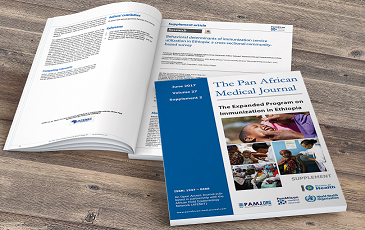Transposition pénoscrotale chez un adulte
Hatim Jroundi, Sow Aboubakry
Corresponding author: Hatim Jroundi, Service d´Urologie, Centre Hospitalier Universitaire Hassan II, Fès, Maroc 
Received: 04 Nov 2019 - Accepted: 12 Nov 2019 - Published: 02 Jan 2020
Domain: Urology
Keywords: Penoscrotal transposition, hypospadias, urogenital malformations
©Hatim Jroundi et al. PAMJ Clinical Medicine (ISSN: 2707-2797). This is an Open Access article distributed under the terms of the Creative Commons Attribution International 4.0 License (https://creativecommons.org/licenses/by/4.0/), which permits unrestricted use, distribution, and reproduction in any medium, provided the original work is properly cited.
Cite this article: Hatim Jroundi et al. Transposition pénoscrotale chez un adulte. PAMJ Clinical Medicine. 2020;2:2. [doi: 10.11604/pamj-cm.2020.2.2.20892]
Available online at: https://www.clinical-medicine.panafrican-med-journal.com//content/article/2/2/full
Transposition pénoscrotale chez un adulte
Penoscrotal transposition in an adult
Hatim Jroundi1,&, Sow Aboubakry1
1Service d'Urologie, Centre Hospitalier Universitaire Hassan II, Fès, Maroc
&Auteur correspondant
Hatim Jroundi, Service d'Urologie, Centre Hospitalier Universitaire Hassan II, Fès, Maroc
Penoscrotal transposition (PST) is a rare congenital malformation of the external genitalia, defined by a partial or complete exchange of position between the penis and the scrotum. The partial or incomplete form of PST remains the most common, and is generally associated with other urogenital, cardiovascular, musculoskeletal, gastrointestinal and central nervous system malformations. We report the case of a 20-year-old man who presents a partial penoscrotal transposition with a penis located in the middle of the scrotum, and a penoscrotal hypospadias, with no other abnormalities. The chest abdomen pelvis CT scan associated with echocardiography did not reveal any other malformations. Surgical treatment in two stages including a correction of the PST on the modified technique Glenn Anderson followed by urethroplasty was proposed to the patient, but he categorically refused, and he was lost.
Key words: Penoscrotal transposition, hypospadias, urogenital malformations
La transposition pénoscrotale (TPS) est une malformation congénitale rare des organes génitaux externes, elle est définie par un échange partiel ou complet de position entre le pénis et le scrotum. La forme incomplète ou partielle de la TPS reste la plus fréquente, et elle est généralement associée à d'autres malformations urogénitales, cardiovasculaires, musculo-squelettiques, gastro-intestinales et du système nerveux central. Nous rapportons le cas d'un homme âgé de 20 ans qui présente une transposition pénoscrotale partielle avec un pénis situé au milieu du scrotum, et un hypospadias pénoscrotal, sans d'autres anomalies. Le scanner thoraco-abdomino-pelvien associé à une échocardiographie n'ont pas révélé d´autres malformations. Un traitement chirurgical en deux temps comprenant une correction de la TPS selon la technique modifiée de Glenn-Anderson suivie d'une urétroplastie a été proposée au patient, mais il l'a refusé catégoriquement, puis il a été perdu de vue.
Figure 1: A) transposition pénoscrotale partielle avec un pénis au milieu du scrotum; B) hypospadias pénoscrotal associé
Search
This article authors
On Pubmed
On Google Scholar
Citation [Download]
Navigate this article
Similar articles in
Warning: file_get_contents(): SSL operation failed with code 1. OpenSSL Error messages: error:0A000126:SSL routines::unexpected eof while reading in /home/panafric/panafrican-med-journal.com/content/article/index_article_common.php on line 546
Warning: file_get_contents(): SSL: Success in /home/panafric/panafrican-med-journal.com/content/article/index_article_common.php on line 546





